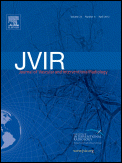
JOURNAL OF VASCULAR AND INTERVENTIONAL RADIOLOGY
Scope & Guideline
Bridging Research and Clinical Practice in Radiology
Introduction
Aims and Scopes
- Innovative Interventional Techniques:
The journal prominently features studies on new interventional techniques including embolization, ablation, and catheter-based therapies for various conditions such as tumors, vascular malformations, and acute hemorrhages. - Clinical Outcomes and Safety:
JVIR publishes research assessing the safety, efficacy, and clinical outcomes of interventional procedures, including systematic reviews and meta-analyses that provide insights into best practices and patient management. - Imaging Advances in Interventional Radiology:
The journal highlights advancements in imaging modalities that support interventional procedures, including the use of ultrasound, CT, and MRI to enhance diagnostic accuracy and therapeutic effectiveness. - Emerging Technologies and Techniques:
JVIR explores the integration of emerging technologies such as artificial intelligence, machine learning, and robotic-assisted procedures in interventional radiology, paving the way for future innovations. - Multidisciplinary Approaches:
The journal emphasizes collaborative efforts across specialties in managing complex cases, showcasing multidisciplinary research that addresses the intersection of interventional radiology with surgical, oncological, and critical care disciplines.
Trending and Emerging
- Interventional Oncology:
A significant increase in publications related to interventional oncology, particularly the use of radioembolization and ablative therapies for various malignancies, reflects the growing recognition of interventional radiology's role in cancer treatment. - Integration of Artificial Intelligence:
Emerging research on the application of artificial intelligence in interventional radiology is gaining traction, showcasing its potential to enhance procedural accuracy, patient selection, and outcomes. - Patient-Centered Outcomes Research:
There is a rising emphasis on patient-reported outcomes and quality of life assessments following interventional procedures, indicating a shift towards more holistic approaches in evaluating the success of treatments. - Cost-Effectiveness Analyses:
Increasingly, studies focused on the economic aspects of interventional procedures, including cost-effectiveness analyses, are emerging, reflecting the need for data-driven decision-making in healthcare. - Technological Innovations in Access Techniques:
Recent publications highlight advancements in access techniques, including the use of novel devices and methods that improve safety and efficacy in various procedures, signaling a trend towards innovation in procedural access.
Declining or Waning
- Traditional Surgical Comparisons:
There seems to be a decline in studies comparing traditional surgical techniques with interventional radiology approaches. As interventional methods become more established, the focus may shift towards optimizing and improving these procedures rather than contrasting them with surgical alternatives. - Basic Techniques and Case Reports:
The journal has seen fewer publications centered on basic techniques and isolated case reports, indicating a trend towards more complex, multi-center studies that demonstrate broader applications and outcomes. - Non-Interventional Radiology Focused Research:
There is a noticeable reduction in studies that do not directly involve interventional radiology methods or outcomes, as the journal increasingly prioritizes research that aligns closely with its specialized focus.
Similar Journals

Iranian Journal of Radiology
Transforming Radiology with Cutting-Edge StudiesWelcome to the Iranian Journal of Radiology, a pivotal platform dedicated to advancing the field of radiology, nuclear medicine, and medical imaging. Published by BRIEFLAND, this journal aims to disseminate high-quality original research, reviews, and clinical studies that contribute substantially to the global scientific community. Established in 2008 and spanning until 2024, the journal provides an essential archive of knowledge in a rapidly evolving discipline. Although it currently holds a Q4 quartile ranking in the 2023 Scopus metrics, it serves as an important resource for both emerging and established researchers looking to submit their work. Located in the Netherlands, the journal is committed to open dialogue and collaboration amongst professionals in the field, reflecting its accessibility and relevance to both practitioners and academics. With its continued growth and commitment to quality, the Iranian Journal of Radiology is poised to enhance understanding and innovation in diagnostic imaging.
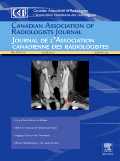
CANADIAN ASSOCIATION OF RADIOLOGISTS JOURNAL-JOURNAL DE L ASSOCIATION CANADIENNE DES RADIOLOGISTES
Transforming Practice: Essential Reading for Radiology ProfessionalsCanadian Association of Radiologists Journal - Journal de l'Association Canadienne des Radiologistes, published by SAGE Publications Inc, stands as a vital resource in the realms of Radiology and Medicine. With an ISSN of 0846-5371 and an E-ISSN of 1488-2361, this esteemed journal offers insightful research articles and reviews that contribute to the advancement and practice of radiology, benefiting both seasoned professionals and emerging scholars. Holding a commendable Q2 ranking in both the fields of Medicine (miscellaneous) and Radiology, Nuclear Medicine and Imaging, the journal is recognized for its impactful publications, positioning its content within the top 40% of global research outputs. Since its inception in 1973 and continuing through to 2024, it has consistently provided a platform for cutting-edge research and clinical innovations, facilitating knowledge transfer among practitioners and educators. The journal’s significant influence is evidenced by its Scopus rank of #67 out of 333 in its category, placing it in the 80th percentile of academic excellence. Although it does not offer open access, its contributions are critical for advancing the field, making it essential reading for all those invested in the evolution of radiological sciences.

Clinical Neuroradiology
Pioneering Research for Enhanced Patient Care.Clinical Neuroradiology, published by SPRINGER HEIDELBERG, is a leading journal in the fields of neurology and radiology, focusing on the intersection of clinical practice and cutting-edge imaging technologies. With an impressive impact factor and categorized within Q2 in Neurology (clinical) and Q1 in Radiology, Nuclear Medicine and Imaging, this journal is positioned at the forefront of scientific discourse, facilitating high-quality research dissemination from its origins in 2000 through to 2024. Situated in Germany, Clinical Neuroradiology provides a platform for researchers, professionals, and students to explore the latest advancements and insights in neuroimaging, ensuring that its readership remains at the vanguard of clinical practice. While it does not offer open access, the journal remains committed to fostering a vibrant academic community dedicated to enhancing patient care through innovative neuroradiological techniques and findings.

EUROPEAN JOURNAL OF RADIOLOGY
Transforming Patient Care Through Radiological ResearchThe European Journal of Radiology, published by Elsevier Ireland Ltd, is a premier peer-reviewed journal in the fields of radiology, nuclear medicine, and imaging. Established in 1981, it has carved a significant niche within the academic community, showcasing innovative research that enhances medical imaging practices and improves patient care. With an impressive ranking in the Q1 category for both Medicine (miscellaneous) and Radiology, Nuclear Medicine, and Imaging in 2023, the journal is recognized globally for its commitment to advancing scientific knowledge and improving imaging methodologies. The journal's Scopus ranking of #60/333, placing it in the 82nd percentile, underlines its reputation for high-quality research and scholarly contributions. While traditionally a subscription-based journal, it continually evolves to meet the demands of the academic landscape, aiming to bridge the gap between research and clinical practice. Researchers, healthcare professionals, and students alike can benefit from exploring its extensive archives and current publications, which are curated to foster education and innovation in the medical imaging domain.
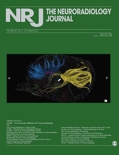
Neuroradiology Journal
Exploring the latest innovations in neuroradiology.Neuroradiology Journal is a prominent publication in the fields of medicine, neurology, and radiology, published by SAGE PUBLICATIONS INC. Located in Italy, this journal has been a key resource since its inception in 2006 and continues to showcase vital research up to 2024. With an ISSN of 1971-4009 and an E-ISSN of 2385-1996, it provides an open platform for groundbreaking studies, effectively bridging clinical practices and advancements in imaging techniques. Holding a respectable position in Q3 of the 2023 category rankings for medicine, neurology, and radiology, the journal caters to a diverse audience of researchers, professionals, and students, driving innovations in neuroradiology and influencing best practices worldwide. Although not an open-access journal, it remains accessible through various subscription options, ensuring that significant findings are distributed widely within the medical community. Stay informed on the latest research and trends that continue to shape the landscape of neuroradiological science through Neuroradiology Journal.
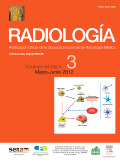
RADIOLOGIA
Exploring the complexities of imaging with expert insights.RADIOLOGIA is a distinguished journal in the field of Radiology, Nuclear Medicine, and Imaging, published by Elsevier España. With a rich history since its inception in 1961, this journal serves as a vital resource for professionals, researchers, and students interested in the latest developments and innovations in radiological practices. Although it is currently categorized in the Q3 quartile, its contributions continue to shape and advance clinical practices and research in radiology. RADIOLOGIA provides a platform for scholarly articles, reviews, and case studies that underpin the complexities of imaging techniques and nuclear medicine, while also addressing emerging trends and technologies. The journal is indexed with the ISSN 0033-8338 and E-ISSN 1578-178X, reflecting its accessibility to a global audience dedicated to enhancing patient care through advanced imaging methodologies. Readers can find the journal published in Spain and benefit from its commitment to disseminating pertinent research across diverse aspects of radiology.
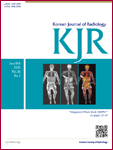
KOREAN JOURNAL OF RADIOLOGY
Empowering the Global Radiology CommunityKorean Journal of Radiology (ISSN: 1229-6929, E-ISSN: 2005-8330), published by the Korean Society of Radiology, stands as a leading international platform for the dissemination of high-quality research and advancements in the fields of radiology, nuclear medicine, and imaging. With a remarkable impact factor and ranked in the Q1 quadrant in its category, this journal showcases cutting-edge studies, clinical investigations, and comprehensive reviews that significantly contribute to the understanding and practice of medical imaging. Researchers, clinicians, and students alike will find the journal an invaluable resource, featuring innovative methodologies, case studies, and essential updates in imaging technology. Since its inception in 2000 and continuing through 2024, the Korean Journal of Radiology remains dedicated to promoting excellence and fostering collaborative research within the global radiology community, underscoring the importance of imaging in modern medicine.

JOURNAL OF INVASIVE CARDIOLOGY
Leading the Conversation in Invasive CardiologyJOURNAL OF INVASIVE CARDIOLOGY, a reputable publication by H M P COMMUNICATIONS, is dedicated to advancing the field of cardiology and cardiovascular medicine through rigorous research and scholarly discussion. With an ISSN of 1042-3931 and an E-ISSN of 1557-2501, this journal serves as a crucial resource for healthcare professionals, researchers, and students who seek to stay informed about the latest findings and innovations in invasive cardiology. Having achieved a 2023 Scopus rank of #185 out of 636 in General Medicine, placing it in the 70th percentile, the journal is recognized for its significant contributions to medical science, evidenced by its Q2 ranking in Radiology, Nuclear Medicine and Imaging, and Q3 status in both Cardiology and Cardiovascular Medicine. The journal has been in circulation since 1990 and continues to foster a platform for critical research in the United States, ensuring accessibility to vital information necessary for enhancing patient care and clinical practices within the domain of invasive procedures.
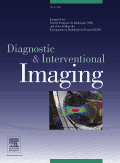
Diagnostic and Interventional Imaging
Shaping the Landscape of Radiological ResearchDiagnostic and Interventional Imaging, published by Elsevier Masson, stands as a prominent journal in the fields of Radiology, Nuclear Medicine, and Imaging. With a significant impact factor and a reputation for high-quality research, this journal is dedicated to advancing the understanding and application of diagnostic and interventional imaging techniques. It has achieved an impressive Q1 ranking across multiple categories including Medicine (miscellaneous) and Radiological and Ultrasound Technology, demonstrating its esteemed position within the academic community. The journal features cutting-edge studies and reviews, reflecting the latest innovations and practices from 2012 to 2024. Researchers, healthcare professionals, and students alike can look forward to accessing valuable insights that drive forward the discipline and improve patient outcomes, as evidenced by its robust Scopus rankings placing it among the top journals in its domain.

European Radiology Experimental
Bridging Clinical Practice and Cutting-Edge ResearchEuropean Radiology Experimental is a premier open-access journal published by Springer Wien, dedicated to advancing the field of radiology through innovative research and experimentation. Since its establishment in 2017, the journal has quickly gained recognition, evidenced by its impressive Q1 ranking in the Radiology, Nuclear Medicine and Imaging category, and its placement within the top 83rd percentile of the Scopus rankings. Based in the United Kingdom, this journal aims to bridge the gap between clinical practice and cutting-edge research, providing a platform for rigorous peer-reviewed articles that explore new methodologies, technologies, and insights in radiological sciences. With a commitment to open access, European Radiology Experimental ensures that its content is readily accessible to a global audience, supporting the dissemination of knowledge and fostering collaborations among researchers, professionals, and students in the medical imaging community. As it progresses through its convergence years, the journal continues to play a vital role in shaping the future of radiological research and practice.